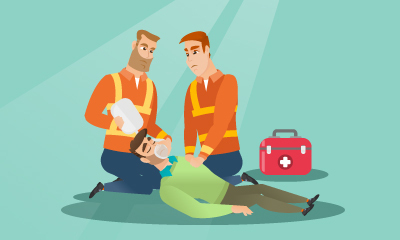First aid is something that is given to a person who is going through any kind of health emergency. First aid training trains you to help such victims.
Pediatric First Aid Training
Pediatric first aid training however is a training given to help children who are going through some kind of health emergency. Pediatric first aid is a quick help or care given to a child who is injured or ill, before anyone with some qualified medical assistance arrives. With this definition of pediatric first aid training, things seem easy. But a major problem arises when at the place of incident there is no one who has knowledge or some kind of first aid training.
This can worsen the situation and can make things more difficult. The situation can be controlled and handled professionally if someone at the incident has some sort of first aid training or knowledge.
Pediatric first aid training is actually care given to children or anyone who is under the age of 16years.
Where Is Pediatric First Aid Training Required?
Any business that deals with kids requires that their staff should be trained to handle any kind of health emergency related to the kids. This means that the staff should have some kind of first aid training in Norwich. Following are some businesses that require their staff to have pediatric first aid training:
- Sports staff
- After school club staff
- Babysitters
- Pre-school, school and nursery staff
DRABC and Initial Survey
In the initial survey, the first aid training professional is required to analyze the situation and decide which immediate treatment is required. This primary or initial survey is a quick response way to analyze and act on the life-threatening situations accordingly. This survey is done in an order that is described by the term DRABC which is explained as follows.
D- DANGER
Assess the level of danger first that can cause harm to the victim or the people present at the place of accident.
R-RESPONSE
To check the response of the victim is the net priority. In case of kids, you have to tap the sole of the foot to get the response. If there is no response, then it is obvious that they are in a non-responsive state.
A-AIRWAY
Next look for any problem regarding the airway. Anything that is blocking the airway can be fatal. If the child is not awake then place your hand on the forehead, tilt the head back and hold the chin up to make sure that the airway is not blocked.
B-BREATHING
Next see for any symptoms regarding breathing problems. It is advised to listen, look and feel any signs for 10 seconds or more. If the victim is not awake and not breathing properly the move on to the next step that is CPR.
C-CIRCULATION
Look and find if there are any circulation problems because the circulation problems can be fatal and life threatening.
The initial survey is done by performing all the above steps. If after performing all above, the child is still unresponsive then it is time to call for emergency assistance.
Essentials for a pediatric first aid box
Following is a list of items that are necessary to add in the pediatric first aid box.
- Gloves
- Face shield
- Dressings for wounds and injuries
- Adhesive medical tapes
- Scissors
- A first aid guide
- Eye wash
First aid box should be placed in a cool, safe, clean and dry place. The box should be on an effortlessly reachable place so that anyone in need can easily access the box.
Do’s and Don’ts of Pediatric First Aid Training
Following is a list of some do’s and don’ts of pediatric first aid training.
Don’ts
- Do not give anything to the child to eat or drink. This can result in a vomit as the child may be in some kind of trauma or shock and eating or drinking something will eventually come out.
- Do not put a cushion under their head. Putting the cushion under their head can hinder the circulation process. Therefore, it is recommended to lie them down on the ground with straight head.
Do’s
- Turn the side of the child after every 30 minutes. This can help with the circulation process.
- Put a blanket or some warm fleece on the child. Whenever the child has some health emergency or injury, they are going through some trauma. That is why it is important to make them feel comfortable first to help them relax.
- You should check the different responses of a child by performing simple tests. For example, asking them simple questions regarding their self-introduction (if the child is old enough to answer). Other method for infants and toddlers is to tap the sole of the foot to check their response.
Concluding Statement The pediatric first aid training or simple first aid training is always helpful in emergency situations. One should consider it a necessity to take some certification in first aid training to become a better member of the community and to contribute in the wellbeing of the society

